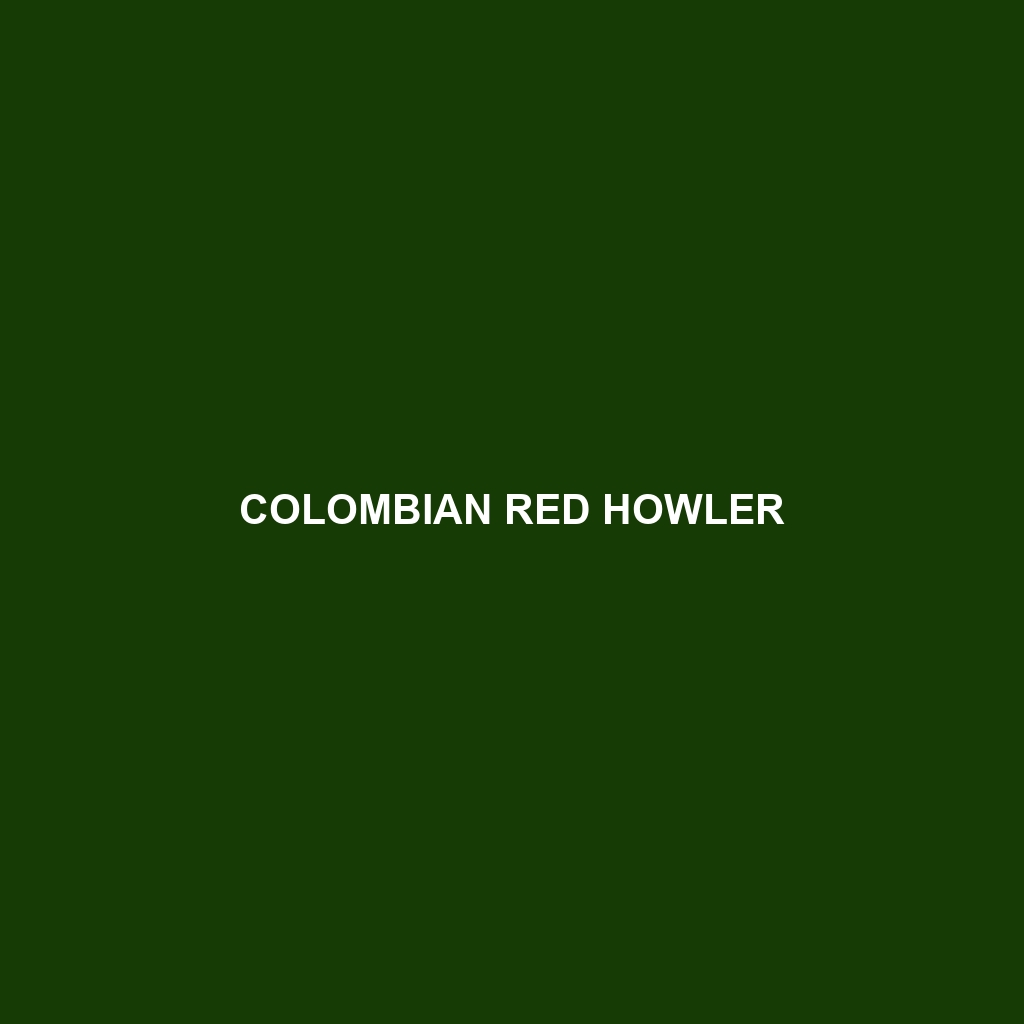Colombian Red Howler (Alouatta seniculus)
The Colombian Red Howler, also known as the Venezuelan Red Howler, is a striking New World primate known for its vibrant red fur and powerful vocalizations. Found primarily in the tropical forests of Colombia and surrounding regions, these howlers are integral components of their ecosystems, contributing to seed dispersal and forest dynamics.
Physical Characteristics:
Size: Adult Colombian Red Howlers exhibit sexual dimorphism. Males are generally larger, with body lengths ranging from 49 to 72 cm (19 to 28 inches) and weighing between 6 to 10 kg (13 to 22 lbs). Females are comparatively smaller, measuring 46 to 57 cm (18 to 22 inches) and weighing 4.5 to 7.5 kg (10 to 16.5 lbs).
Coloration: As their name suggests, they sport a rich red to reddish-brown pelage that provides camouflage in their lush, forested environments.
Special Features: One of their most distinctive features is their enlarged hyoid bone, which acts as a resonating chamber, enabling their loud, far-reaching calls. They also have a prehensile tail, which they use adeptly for climbing and grasping branches.
Behavior:
Social Interactions: Colombian Red Howlers are social animals, typically forming troops ranging from 3 to 12 individuals. These groups usually consist of a single dominant male, several females, and their offspring. Social bonds are maintained through grooming and other affiliative behaviors.
Feeding Habits: They are primarily folivorous, feeding on young leaves, but their diet also includes fruit, flowers, and occasionally small invertebrates. Their slow metabolism helps them process their fibrous diet efficiently.
Ecological Roles: By consuming a variety of plant materials and dispersing seeds through their feces, these howlers play a crucial role in maintaining the health and diversity of their forest ecosystems.
Habitats:
Range: Colombian Red Howlers inhabit a range of forest types, including rainforests, cloud forests, and gallery forests. They are found at elevations up to 2,500 meters (8,200 feet).
Adaptations: Their strong, prehensile tails and limbs are highly adapted for an arboreal lifestyle, allowing them to navigate the canopy with ease. Their loud howls, primarily used for territorial communication, can be heard up to 3 miles (5 km) away through dense forest.
Conservation Status:
The International Union for Conservation of Nature (IUCN) currently lists the Colombian Red Howler as “Least Concern.” However, like many forest-dwelling species, they are vulnerable to habitat destruction due to logging, agriculture, and human encroachment. Conservation efforts focus on habitat preservation and mitigating human-wildlife conflicts.
Fun Facts:
Colombian Red Howlers are among the loudest land animals on Earth. Their calls can reach up to 140 decibels, comparable to the noise level of a rock concert.
The howler’s diet is rich in tannins, which are typically bitter and hard to digest. To cope with this, they have a specialized stomach and slow digestive process that allows them to extract maximum nutrients.
Despite their formidable vocalizations, howlers are generally peaceful and avoid direct confrontations with other troops, relying on their calls to establish territory boundaries.
The Colombian Red Howler is a fascinating primate species that continues to intrigue researchers and wildlife enthusiasts alike. Their unique adaptations and critical role in their habitats underscore the importance of ongoing conservation efforts to ensure their survival for future generations.
